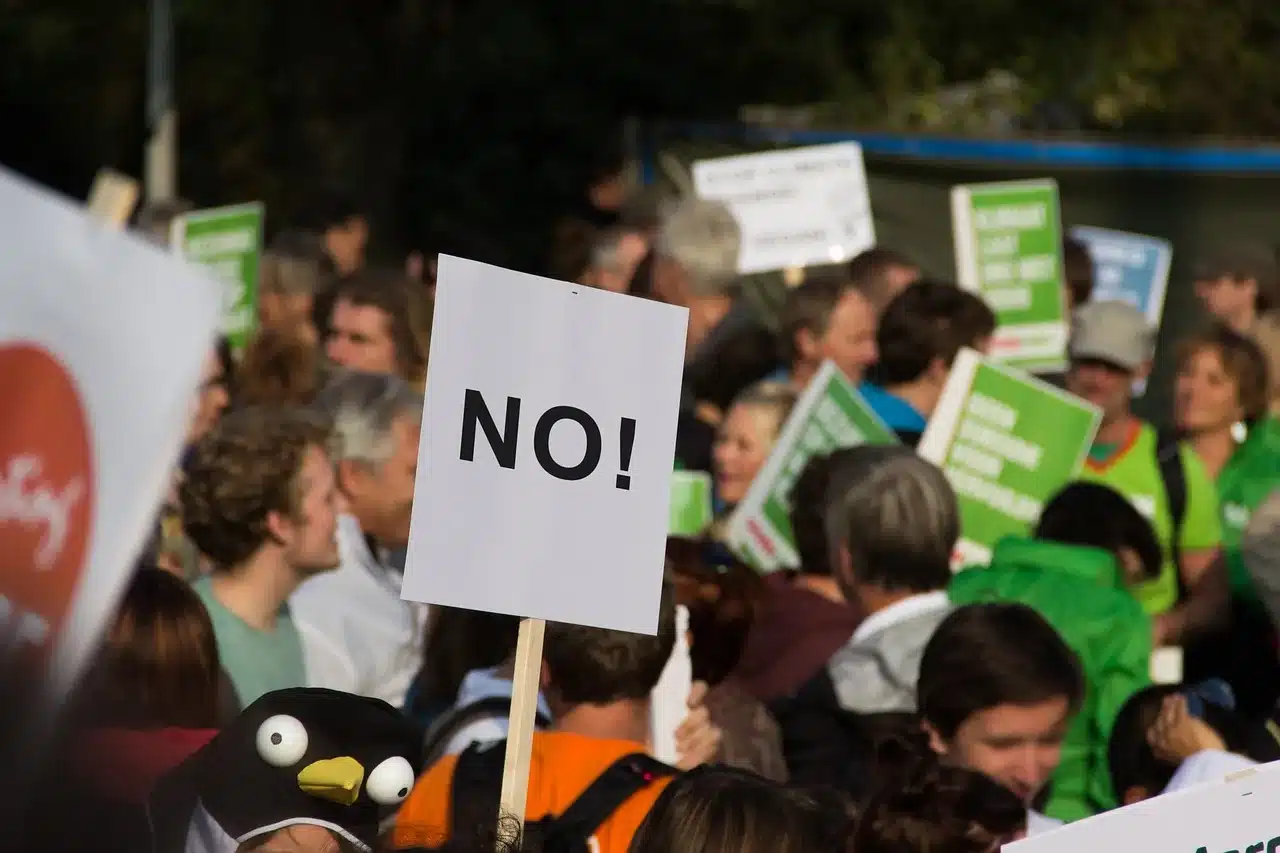Climate activists are increasingly using peaceful civil disobedience to raise public ecological awareness. Research by scientists from George Mason University has shown that some of their actions, such as marches and sit-in protests, are viewed as more acceptable than road blockades or damaging artworks. This suggests that the form of protest can influence how much people support the activists’ demands, though further research is needed.
“The tactics used by climate activists are very diverse – from marches or sit-in strikes outside buildings to protests inside buildings, boycotts, traffic blockades, shutting down airports, and pouring paint or soup. In our study, we wanted to see what tactics are actually used and try to understand and analyze as many of them as possible,” said Dr. Nic Badullovich from the Center for Climate Change Communication at George Mason University, co-author of the study, to Newseria Biznes.
Forms of protest such as building occupations, street blockades, or attacks on artworks have become increasingly common tactics to attract attention. In mid-October 2022, climate activists from Just Stop Oil entered the National Gallery in London, stopped by one of the gallery’s most visited artworks, Vincent van Gogh’s “Sunflowers,” opened a can of tomato soup, poured it on the painting, and glued themselves to the wall. They wanted to call for the elimination of fossil fuels to stop further climate change. This was not an isolated case – similar actions have affected Claude Monet’s “Spring” in Lyon, the “Mona Lisa” in the Louvre in Paris, and the Warsaw Mermaid. Recently, activists sprayed Stonehenge with paint.
The attack on Van Gogh’s work prompted scientists at the Center for Climate Change Communication to conduct research. They examined how public perception of climate protests influences support for climate action.
“The first part of the study involved an online survey where we asked participants to rate how appropriate or inappropriate various methods of climate change protests seemed to them. These included boycotts, sit-in strikes, and actions like pouring soup. After getting their responses, we asked how appropriate or inappropriate the targets of these protests were, such as politicians, fossil fuel company executives, or banks,” explained Dr. Nic Badullovich.
Participants were presented with a random list of 16 protest tactics and 16 targets, all based on real events. They were then asked to rate each tactic and target on a seven-point scale, from highly inappropriate to highly appropriate. Nonviolent actions were rated as the most appropriate tactics. Boycotts, public marches, and sit-ins topped the list with high appropriateness scores, indicating broad public support for these traditional forms of protest. In contrast, actions involving physical aggression or property destruction were viewed negatively. Physical assault, throwing soup at artworks, and breaking into buildings were seen as highly inappropriate.
The most favorably rated actions targeted businesses involved in fossil fuel extraction, CEOs of these companies, or federal government officials supporting fossil fuels. Researchers observed clear disapproval of attacking entities or individuals perceived as less directly responsible for exacerbating climate change. Museums that do not accept fossil fuel funding, ordinary people, and car commuters were deemed the least appropriate targets.
“In the second part of the study, we took these appropriate or inappropriate tactics from the first part and turned them into brief messages. We used these messages in an experimental context, showing some participants the messages deemed appropriate and others the more inappropriate ones. We wanted to see how presenting people with specific messages would affect their support for climate movements,” said the expert.
The study suggests that actions perceived as acceptable and aimed at acceptable targets might be more effective than other forms perceived as less acceptable. However, the researchers did not find significant differences in support for the climate movement across different groups. They noted that this is not surprising since the study involved too small a sample and should be seen as a first step toward in-depth research.
“The type of protest can influence public perception in terms of support for the protesters’ demands. Our study does not directly address this because it was only a pilot study, but many other studies generally approach this issue. One key aspect that matters significantly is how much a given protest disrupts normal functioning,” said Dr. Nic Badullovich.
On the one hand, overly confrontational actions – with which bystanders do not agree – can discourage support for the actions. An earlier study by the Annenberg Public Policy Center indicated that nearly half of respondents (46%) felt that aggressive forms of protest decreased their support for climate action efforts. On the other hand, more radical actions can draw more attention to the protesters’ demands.
“We believe it is important to take collective action, be able to voice our demands, and support broader public support for climate solutions. However, the question remains: how to do this most effectively? I think the answer to this question will probably come later when we conduct more research. These studies will help us better understand the impact of more radical protests on building support,” noted the researcher from the Center for Climate Change Communication.
Scientists are already planning a larger study to examine the perception of various protest tactics by climate activists.
“This was just a pilot study, so generally too small in scope, but it can serve as a first step and lay the groundwork for further exploration of the questions posed in it. I hope that other people will take a broader interest in this topic and focus on understanding these issues, such as determining which types of protests have a more positive impact on public support, or gaining a broader understanding of the role of strategy in protests. It’s about asking what goals we want to achieve and then choosing a tactic that will help achieve them,” emphasized Dr. Nic Badullovich.
